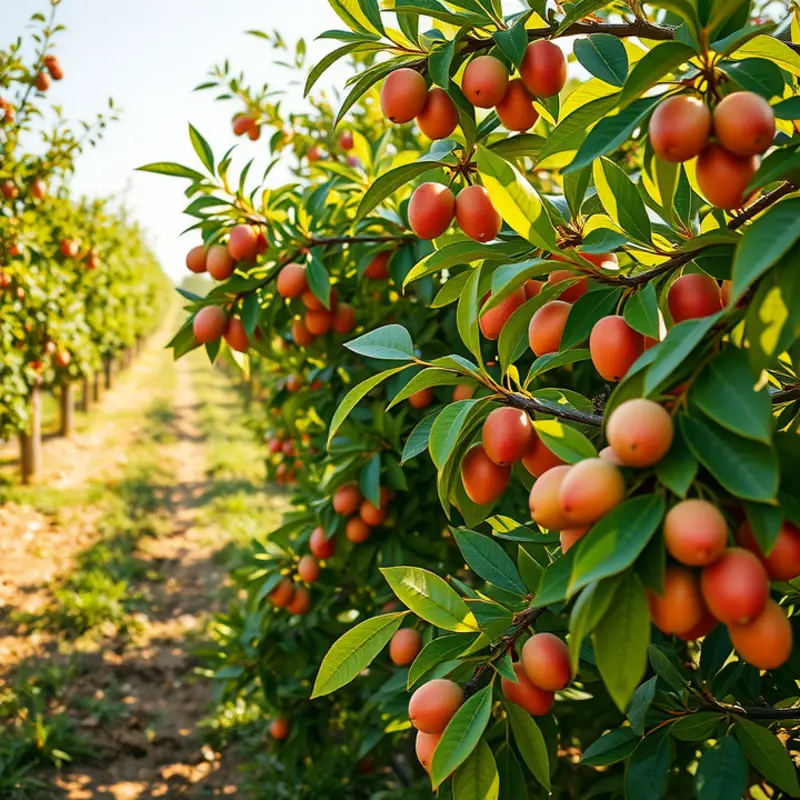Eating in an eco-friendly way is not just a personal choice; it’s a vital step toward conserving our planet’s resources. The foods we consume have significant environmental impacts, from their production to their transportation and packaging. By becoming more aware of our food choices, we can support sustainable practices that protect ecosystems, reduce carbon footprints, and promote health. This guide will delve into practical methods for incorporating eco-friendly eating habits into your lifestyle, empowering you to contribute positively to the environment.
Understanding Eco-Friendly Food Choices

Eco-friendly food choices often start with the decision to source locally. By prioritizing local produce, we reduce the need for long-distance transportation, which curtails fossil fuel consumption and lowers the overall carbon footprint of our meals. Moreover, locally grown food is often fresher, requiring fewer preservatives and possibly offering more nutrients.
Organic farming also plays a crucial role in sustainable eating. Organic practices avoid harmful synthetic pesticides and fertilizers, promoting soil health and fostering biodiversity. Additionally, organic farms often utilize crop rotation and natural composting methods. These methods support the ecosystem and enhance the land’s long-term productivity. For more guidance on nutrition and organic choices, explore how to improve your food selections in this article.
Embracing seasonal eating is another impactful choice. Consuming foods that are in season reduces the demand for out-of-season produce, which usually requires energy-intensive greenhouses or long import journeys. Seasonal foods typically travel shorter distances and use fewer resources for cultivation, making them a greener choice.
The environmental implications of food production extend beyond cultivation to transportation. Food miles—the distance food travels from production to consumer—can significantly affect its carbon footprint. By choosing foods with fewer food miles, we conserve energy and mitigate greenhouse gas emissions.
Furthermore, adopting plant-based meals significantly lowers our environmental impact. Animal agriculture is resource-intensive, requiring vast amounts of water, feed, and land. Livestock farming emits major greenhouse gases, such as methane and nitrous oxide, contributing to climate change. Plant-based diets, by contrast, demand fewer natural resources and are associated with a reduced carbon footprint.
To illustrate, consider the impact of legumes versus beef. Producing one kilogram of beef can generate up to 60 kilograms of greenhouse gases. In comparison, legumes might yield only a fraction of these emissions. Thus, incorporating more vegetables, legumes, and grains into our diets not only promotes personal health but also supports planetary well-being.
Understanding eco-friendly food choices involves considering how our meals are produced and transported. By prioritizing local sourcing, organic and seasonal foods, and plant-based options, we can contribute to a healthier planet with each meal.
Practical Steps to Eco-Friendly Eating

Adopting eco-friendly eating habits begins with intentional meal planning. Start by focusing on seasonal ingredients. Not only do these options tend to be more nutritious, but they also reduce the carbon footprint associated with transporting out-of-season produce. To stay informed, consider checking seasonal availability charts for your local area. This practice supports regional farmers and encourages biodiversity.
Once you’ve identified seasonal produce, the next step is meal planning. Planning meals around what’s available reduces food waste and helps you make more strategic grocery purchases. A weekly plan can include recipes that utilize overlapping ingredients. For instance, a bunch of spinach can serve as a salad base, a soup component, and a smoothie booster, maximizing its use and freshness.
Proper storage techniques further enhance sustainability by reducing waste. Invest in reusable containers and employ methods like freezing or pickling to prolong the life of produce. For instance, trimming and blanching vegetables before freezing retains their nutrients and makes them handy for future meals. This approach not only prolongs food life but also lessens the need for frequent trips to the store, cutting down on transportation emissions.
When shopping, prioritize sustainable brands and certifications that align with eco-friendly practices. Look for products with minimal packaging, fair trade certification, or organic labeling. These choices symbolize support for brands committed to environmental stewardship. For better understanding of such labels, you may refer to this guide on nutritional labeling basics.
Local farmer’s markets are an invaluable resource for sourcing fresh and sustainable ingredients. Farmers offer insights into their growing practices, allowing you to choose produce grown with minimal environmental impact. Additionally, local markets foster a sense of community, aligning personal well-being with environmental health.
Composting is another cornerstone of an eco-friendly eating lifestyle. It transforms kitchen scraps and food waste into nutrient-rich soil, closing the loop of sustainability. Whether you live in a spacious house or a small apartment, there are composting solutions available, like vermicomposting or using a bokashi bin. Composting not only reduces landfill waste but also enriches soil, supporting healthy plant growth.
These steps form the bedrock of an eco-friendly eating regimen. By integrating these habits into your life, you actively participate in the health of our planet, making each meal a tribute to sustainability.
Final words
Embracing eco-friendly eating habits empowers individuals to make a meaningful impact on the environment. Every small change counts, from choosing local, seasonal produce to reducing food waste and opting for plant-based meals. By fostering a more conscious approach to food, we can help protect the earth while nourishing our bodies. The journey to sustainable eating may require adjustments, but the rewards are abundant. You have the power to influence change through your daily choices—let’s make every meal a step toward a healthier planet together.








